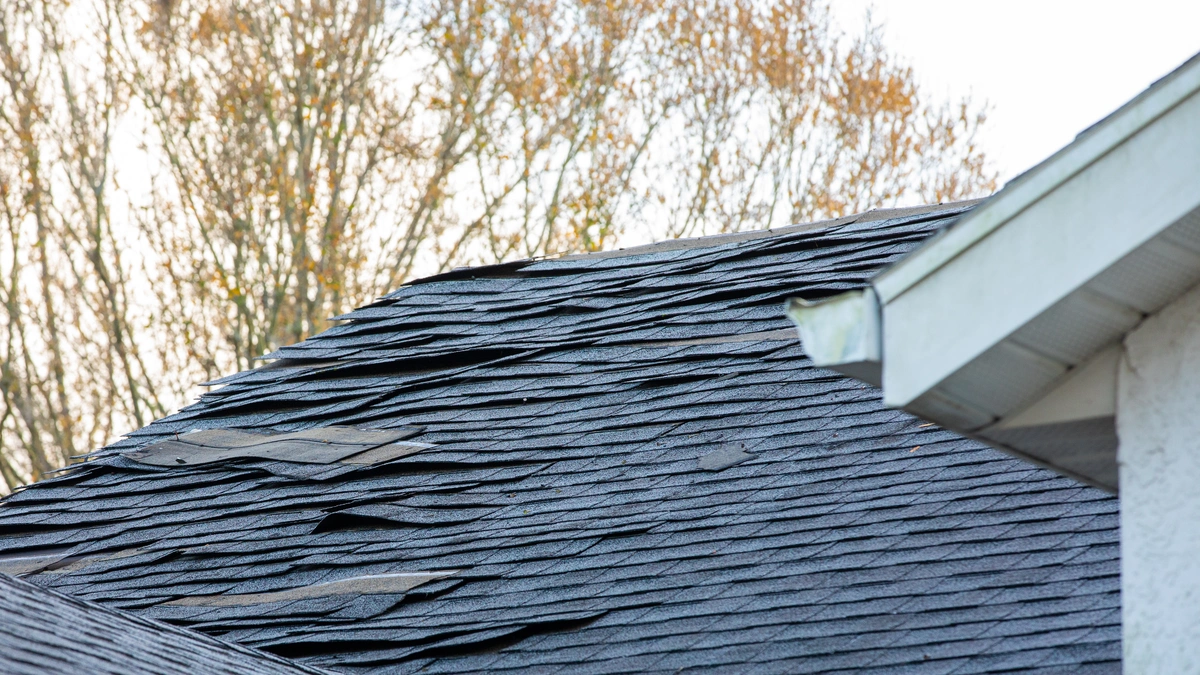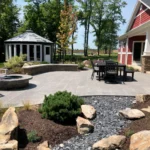In the aftermath of a severe storm, your roof stands as the first line of defense for your home. When high winds, hail, and heavy rainfall compromise this crucial barrier, timely storm damage roof repair becomes essential to protect your property investment. Many homeowners underestimate both the extent of storm damage and the urgency required to address it. According to recent studies, delaying roof repairs after storm damage can increase repair costs by up to 35% within just six months. This comprehensive guide will explore the critical aspects of storm damage roof repair, from identifying common types of damage to selecting qualified professionals like Pickle Roofing to restore your roof’s integrity. We’ll cover assessment techniques, insurance considerations, preventative measures, and more to help you navigate the complexities of protecting your home following severe weather events.
Understanding Different Types of Storm Damage to Roofs
Storm damage comes in various forms, each affecting your roofing system differently and requiring specific repair approaches. Understanding these distinct damage types helps homeowners identify problems early and pursue appropriate solutions.
Wind damage typically occurs when gusts exceed 45-50 mph, creating uplift forces that can loosen, crack, or completely remove shingles. This damage often appears as curled or missing shingles, particularly along roof edges and ridgelines where wind exposure is greatest. The National Weather Service reports that approximately 60% of roof storm damage cases involve wind-related issues. Identifying wind-damaged shingles requires careful inspection of these vulnerable areas, looking for loosened nails, exposed underlayment, or damaged flashing.
Hail damage presents differently, creating impact points that may not be immediately visible to untrained eyes. Hailstones as small as 1 inch in diameter can create divots in asphalt shingles, knock off protective granules, and crack tile or slate roofing materials. These seemingly minor impacts compromise the roof’s waterproofing ability and significantly reduce its lifespan. Texas homeowners face particular challenges with hail, as the state consistently ranks among the top five for hail damage claims, with repair costs averaging between $5,000 and $10,000 according to insurance industry data. Understanding the hail damage claims process can help streamline recovery efforts.
Water damage often follows wind and hail incidents, as compromised roofing materials allow moisture infiltration. Signs include water stains on ceilings, damp insulation in attics, and mold growth. These issues may take weeks or months to become visible inside the home, highlighting the importance of professional roof inspections after storms even when no obvious damage appears.
Immediate Steps to Take After Storm Damage
When a storm subsides, taking prompt action can minimize secondary damage and strengthen your position for insurance claims. Following these critical steps helps protect both your property and financial interests.
First, prioritize safety in your damage assessment approach. Never climb onto a storm-damaged roof, as structural integrity may be compromised. Instead, conduct a preliminary ground-level inspection using binoculars to identify obvious issues like missing shingles, dented gutters, or debris accumulation. Document all visible damage with dated photographs from multiple angles, as this evidence proves invaluable during insurance claims processes.
Next, implement temporary protective measures for significantly damaged areas. Properly sized tarps secured with non-invasive methods can prevent water infiltration until professional repairs begin. However, avoid DIY repairs that might void warranties or insurance coverage. Professional emergency roof repair services, like those offered by Pickle Roofing, provide properly executed temporary solutions that preserve your insurance and warranty protections.
Finally, contact your insurance provider within 24-48 hours to initiate the claims process. Most policies include specific timeframes for storm damage reporting, and delays may result in reduced coverage. Request a thorough explanation of your policy’s storm damage provisions, deductible requirements, and documentation needs. Many reputable roofing contractors offer free inspections and can assist with insurance navigation, though they should never guarantee coverage or suggest fraudulent reporting practices.
The Professional Roof Inspection Process
A comprehensive professional roof inspection forms the foundation of effective storm damage repair. Understanding this process helps homeowners appreciate its value and ensure nothing is overlooked.
Professional inspectors employ a systematic approach that includes:
- Exterior examination of all roofing materials, flashing, gutters, and ventilation components
- Interior inspection of attic spaces, checking for water intrusion, insulation damage, and structural issues
- Documentation using specialized tools like moisture meters and infrared cameras to detect hidden damage
The inspection typically produces a detailed report identifying all storm-related issues, distinguishing them from pre-existing conditions, and outlining necessary repairs with cost estimates. This documentation proves crucial for insurance claims, as it provides objective evidence from qualified professionals.
Professional assessments detect problems invisible to homeowners, particularly “hidden” damage that compromises roof integrity without obvious surface indicators. For instance, impact damage from hail may crack the underlayment or fracture shingles without immediately visible signs. Studies indicate that approximately 30% of storm damage goes undetected in homeowner self-assessments, leading to progressive deterioration and more extensive repairs later.
Choosing qualified inspectors requires verifying proper licensing, insurance, and storm damage certification. Reputable companies maintain these credentials and employ technicians specifically trained in storm damage identification. When scheduling inspections, request verification of these qualifications and ask about the company’s experience with insurance claim documentation.
Navigating Insurance Claims for Roof Storm Damage
The insurance claims process often represents the most challenging aspect of storm damage recovery. A strategic approach improves outcomes and reduces frustration during this critical phase.
Insurance policies contain specific provisions regarding storm damage coverage, including deductible structures, depreciation calculations, and exclusions. Before filing claims, review your policy to understand these details, particularly whether you have Replacement Cost Value (RCV) or Actual Cash Value (ACV) coverage. RCV policies typically provide more comprehensive protection, covering the full replacement cost without depreciation deductions.
Documentation fundamentally influences claim outcomes. Beyond photographs, maintain records of all communication with your insurance company, including representative names, conversation dates, and discussion points. Request claim-specific reference numbers for all interactions. The inspection report from your roofing professional should clearly differentiate storm-related damage from normal wear, as insurance covers only the former.
Many homeowners benefit from professional representation during the claims process. Reputable roofing contractors frequently offer insurance claim assistance, helping translate technical findings into insurance terminology and ensuring adjusters recognize all legitimate damage. This support proves particularly valuable during adjuster inspections, where having your roofing contractor present ensures fair assessment. According to industry statistics, professionally supported claims typically result in 15-30% higher settlement amounts compared to unsupported claims.
If disputes arise, understand your rights to supplemental claims and appeals processes. Most policies include provisions for third-party mediation when disagreements occur about damage extent or repair costs. Document all disputed points clearly, supported by your contractor’s professional assessment and industry-standard repair requirements.
Choosing the Right Storm Damage Repair Contractor
Selecting a qualified storm damage repair contractor significantly impacts both immediate results and long-term roof performance. Several criteria help identify reliable professionals for this specialized work.
When evaluating potential contractors, verify fundamental credentials including:
- Current state licensing specific to roofing
- Comprehensive business insurance including workers’ compensation and liability coverage
- Manufacturer certifications from major roofing material producers
- Specialized training in storm damage assessment and repair
- Positive standing with consumer protection organizations
Beyond these basics, assess the contractor’s specific storm damage experience. Companies specializing in storm restoration, like those featured in case studies on the Pickle Roofing website, develop specialized knowledge of insurance requirements, material selection for weather resistance, and techniques that address storm-specific problems. Ask potential contractors about their storm damage project volume and request examples of similar repairs they’ve completed in your area.
The proposal process provides another evaluation opportunity. Comprehensive proposals should include detailed material specifications, clear scope-of-work descriptions, warranty information, and realistic timelines. Be cautious of contractors offering extremely quick completion promises, as material availability and proper scheduling often require reasonable timeframes for quality results. Similarly, question any contractor requesting full payment before work begins, as standard industry practice involves payment schedules tied to project milestones.
Finally, evaluate communication quality throughout the selection process. Contractors demonstrating clear, responsive communication during initial interactions typically maintain this standard throughout projects. This proves particularly important for storm damage repairs, where coordination between homeowners, insurance representatives, and material suppliers requires consistent information exchange.
Storm Damage Repair Techniques and Materials
Understanding the technical aspects of storm damage repair helps homeowners evaluate contractor recommendations and ensure appropriate solutions for their specific situation.
Modern storm damage repair incorporates materials specifically engineered for weather resistance. Impact-resistant shingles, for instance, feature reinforced construction that withstands hail up to 2 inches in diameter – a significant improvement over standard materials. These specialized products often qualify homeowners for insurance premium discounts, with studies showing 10-15% annual savings in high-risk regions. Similarly, enhanced underlayment systems provide secondary water protection, preventing leaks even when primary roofing materials sustain damage during extreme weather.
Repair techniques vary based on damage type and severity. Isolated shingle damage typically requires “weaving” replacement shingles into existing materials, ensuring water flows properly across the repaired area. More extensive damage necessitates section replacement, where contractors remove all materials down to the decking in the affected area before rebuilding with new components. Complete replacement becomes necessary when damage extends across more than 30% of the roof surface or when multiple layers have been compromised.
Quality contractors implement system-wide assessments during repairs, addressing related components affected by storm damage. This includes:
- Checking ventilation systems compromised by impact or wind
- Replacing damaged flashing around roof penetrations
- Restoring gutter and drainage systems to prevent water accumulation
- Reinforcing vulnerable areas against future storm damage
These comprehensive approaches, though sometimes exceeding insurance coverage minimums, provide superior long-term protection and prevent progressive deterioration from incompletely addressed storm effects.
Preventative Measures for Future Storm Protection
While storm damage cannot be completely prevented, strategic measures significantly reduce vulnerability and potential repair costs. Implementing these approaches helps protect your investment against future weather events.
Regular professional maintenance creates the foundation of storm resistance. Annual or semi-annual inspections identify and address minor issues before they become failure points during severe weather. These inspections should include assessment of shingle adhesion, flashing integrity, and structural connections – all critical factors in wind resistance. Data from insurance studies indicates that homes with documented maintenance histories experience 40-60% less severe damage during comparable storm events.
Structural upgrades provide another layer of protection. Hurricane straps and reinforced roof-to-wall connections dramatically improve wind resistance, often increasing tolerances from 90 mph to 150+ mph. Similarly, proper attic ventilation systems reduce pressure differentials during storms, decreasing the likelihood of shingle lift and tear-off. While these upgrades represent additional investments, they typically deliver 200-300% returns when measured against avoided damage costs.
Material selection also influences storm resilience. When repairs or replacements become necessary, choosing impact-rated and high-wind-resistant materials provides superior protection. Though these premium products typically cost 15-25% more initially, their extended lifespan and damage resistance deliver better long-term value. Additionally, many insurance providers offer reduced premiums for homes with certified storm-resistant roofing systems, creating ongoing savings that offset higher installation costs.
Finally, landscape management reduces indirect storm damage risks. Regularly trimming branches overhanging roofs eliminates potential impact sources during high winds. Similarly, securing or removing loose objects from yards before storms prevents these items from becoming projectiles that damage roofing materials.
Strengthen Your Home with Informed Storm Damage Repairs
Protecting your investment through proper storm damage roof repair requires understanding damage indicators, taking prompt action, selecting qualified professionals, and navigating insurance processes effectively. By addressing storm damage comprehensively rather than temporarily patching problems, homeowners preserve both their property value and structural integrity. As severe weather events continue increasing in frequency and intensity, implementing preventative measures and establishing relationships with trusted roofing professionals becomes increasingly important. Remember that quality repairs not only resolve immediate issues but also strengthen your home’s resilience against future storms. If your roof has sustained storm damage, contact experienced professionals who specialize in thorough assessment, appropriate repair techniques, and insurance documentation to ensure complete restoration of your home’s most essential protective system.
About Pickle Roofing Solutions
Pickle Roofing Solutions specializes in comprehensive Pickle Roofing storm damage roof repair services with over 15 years of experience serving homeowners throughout Texas. Our team of certified roofing professionals combines technical expertise with deep knowledge of storm damage assessment, insurance claim processes, and advanced repair techniques. We provide complete storm damage services including emergency tarping, thorough inspections, insurance claim assistance, and high-quality repairs using impact-resistant materials engineered for Texas weather conditions.
Contact our team today to discuss how our storm damage expertise can help you protect your home investment. Schedule a consultation to learn more about our comprehensive inspection and repair services and how we’ve helped countless Texas homeowners recover from storm damage while improving their roofs’ long-term performance and resilience.
| Business Name: | Pickle Roofing Solutions |
| Address: | 1333 W McDermott Dr # 200, Allen, TX 75013 |
| Phone number: | (972) 954-7186 |

















